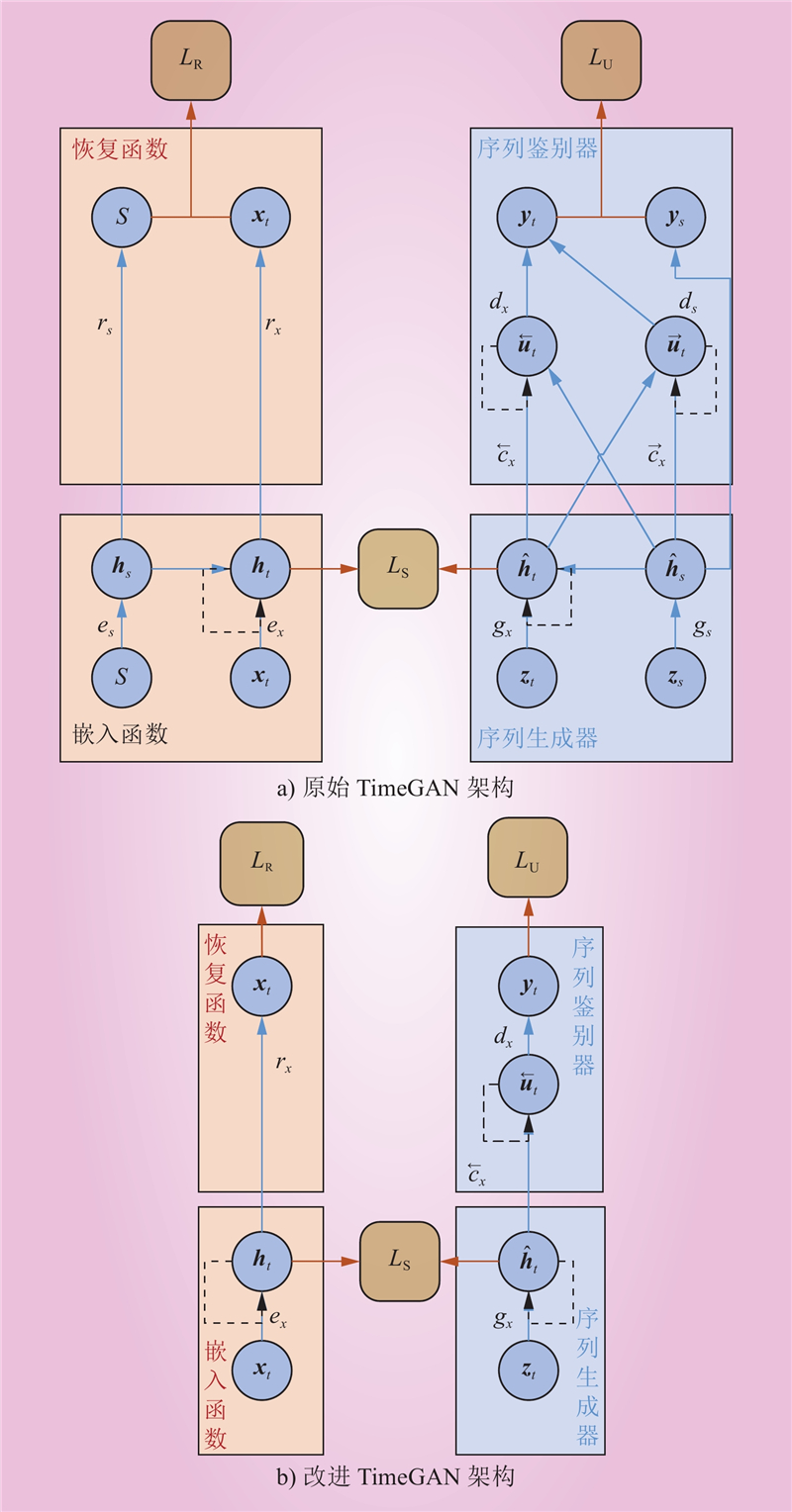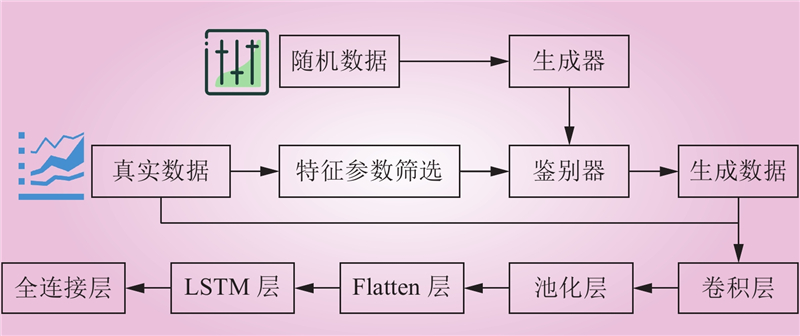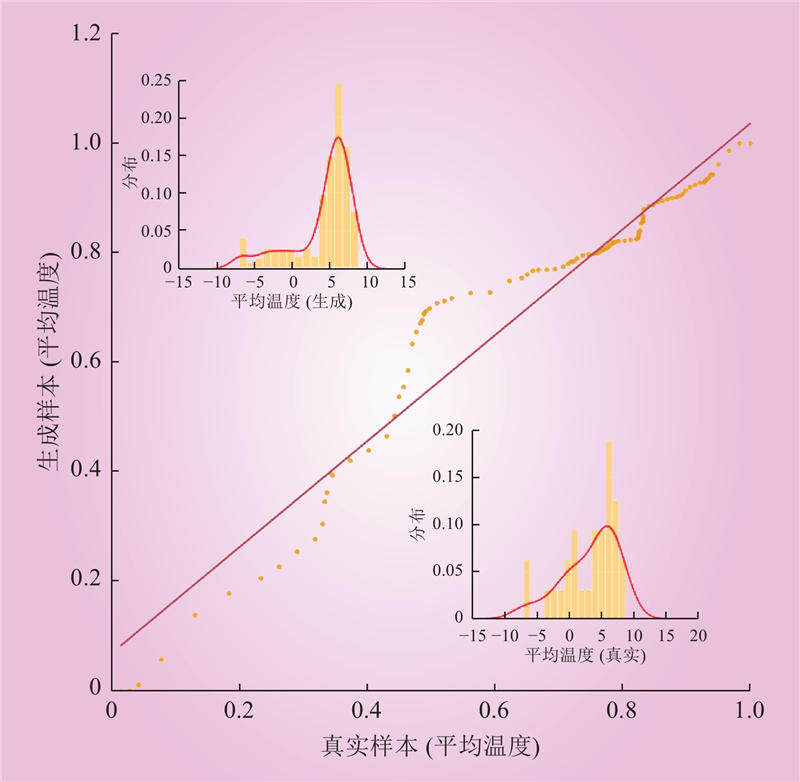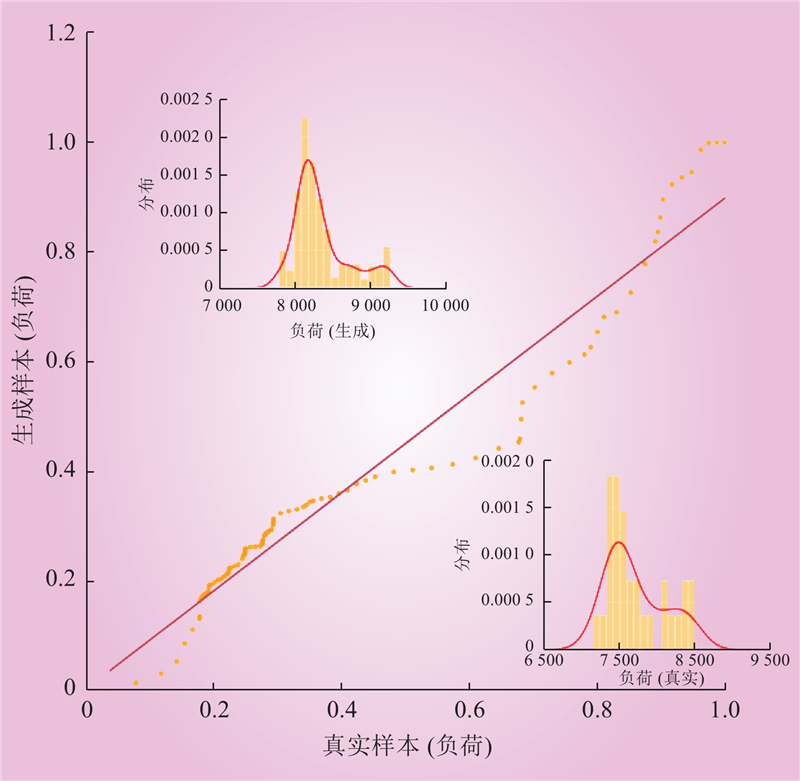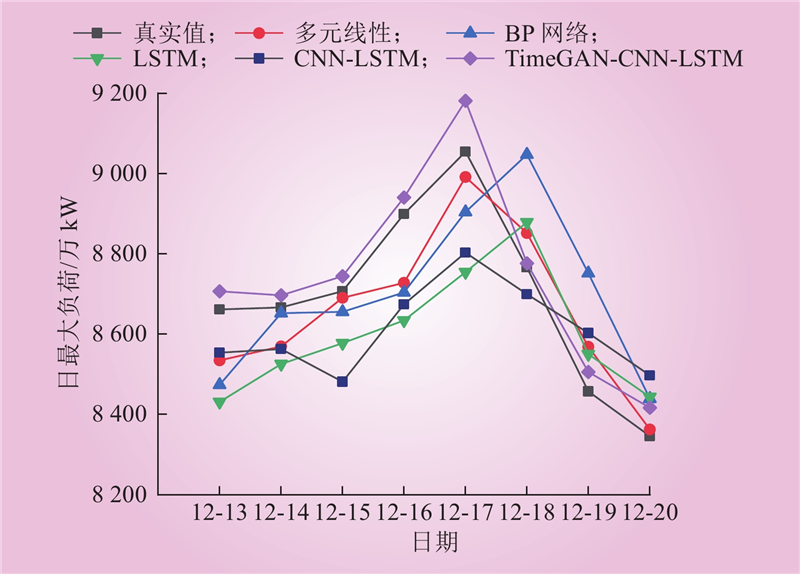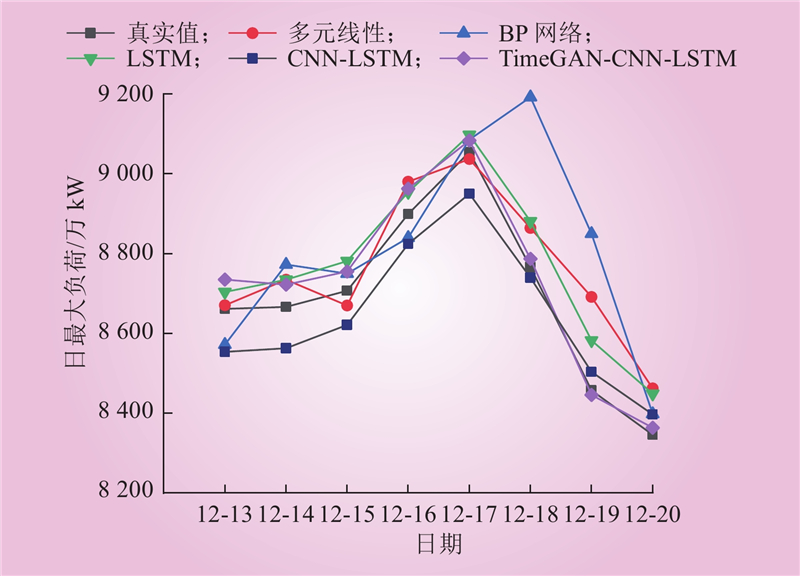| 1 |
辛保安: 2022年国家电网全年电网投资超5000亿元[EB/OL]. (2023-01-12) [2023-03-12]. http://hn.people.com.cn/GB/n2/2023/0112/c356884-40263848.html.
|
| 2 |
赵建立, 向佳霓, 汤卓凡, 等. 虚拟电厂在上海的实践探索与前景分析[J]. 中国电力, 2023, 56 (2): 1- 13.
|
|
ZHAO Jianli, XIANG Jiani, TANG Zhuofan, et al. Practice exploration and prospect analysis of virtual power plant in Shanghai[J]. Electric Power, 2023, 56 (2): 1- 13.
|
| 3 |
康重庆, 陈启鑫, 苏剑, 等. 新型电力系统规模化灵活资源虚拟电厂科学问题与研究框架[J]. 电力系统自动化, 2022, 46 (18): 3- 14.
DOI
|
|
KANG Chongqing, CHEN Qixin, SU Jian, et al. Scientific problems and research framework of virtual power plant with enormous flexible distributed energy resources in new power system[J]. Automation of Electric Power Systems, 2022, 46 (18): 3- 14.
DOI
|
| 4 |
谢敏, 邓佳梁, 刘明波, 等. 基于气象信息和熵权理论的降温负荷估算方法[J]. 电力系统自动化, 2016, 40 (3): 135- 139.
DOI
|
|
XIE Min, DENG Jialiang, LIU Mingbo, et al. Temperature-lowering load estimation method based on meteorological data and entropy weight theory[J]. Automation of Electric Power Systems, 2016, 40 (3): 135- 139.
DOI
|
| 5 |
殷跃. 重庆电网夏季高峰负荷特性分析及优化措施[J]. 宁夏电力, 2021, (5): 28- 33, 43.
|
|
YIN Yue. Characteristic analysis of summer peak load and optimization measures in Chongqing power grid[J]. Ningxia Electric Power, 2021, (5): 28- 33, 43.
|
| 6 |
史静, 周琪, 谈健, 等. 江苏电网夏季空调负荷特性挖掘与温度敏感性辨识[J]. 电力工程技术, 2018, 37 (3): 28- 32.
|
|
SHI Jing, ZHOU Qi, TAN Jian, et al. The load excavation and temperature sensitivity identification of air conditioning in summer of Jiangsu power grid[J]. Electric Power Engineering Technology, 2018, 37 (3): 28- 32.
|
| 7 |
袁斌. 陕西电网夏季降温负荷与温度相关性研究[J]. 电网与清洁能源, 2020, 36 (6): 19- 24, 30.
|
|
YUAN Bin. Correlation analysis of cooling load and temperature in Shaanxi power grid in summer[J]. Power System and Clean Energy, 2020, 36 (6): 19- 24, 30.
|
| 8 |
郭占伍, 张泽亚, 周兴华, 等. 考虑气象因素的电采暖负荷预测研究[J]. 电测与仪表, 2022, 59 (2): 154- 158.
|
|
GUO Zhanwu, ZHANG Zeya, ZHOU Xinghua, et al. Study on forecasting method of electric heating load considering meteorological factors[J]. Electrical Measurement & Instrumentation, 2022, 59 (2): 154- 158.
|
| 9 |
张航, 杨靖, 李昊霖. 基于改进回归模型的电网降温负荷预测[J]. 控制工程, 2023, 30 (3): 513- 519.
|
|
ZHANG Hang, YANG Jing, LI Haolin. Power grid cooling load forecast based on improved regression model[J]. Control Engineering of China, 2023, 30 (3): 513- 519.
|
| 10 |
金丽莉, 谭风雷, 吴志坚, 等. 考虑积温效应的负荷预测研究[J]. 电力需求侧管理, 2013, 15 (1): 7- 10, 14.
DOI
|
|
JIN Lili, TAN Fenglei, WU Zhijian, et al. The study of load forecasting accounting accumulated temperature effect[J]. Power Demand Side Management, 2013, 15 (1): 7- 10, 14.
DOI
|
| 11 |
董莉娜, 张志劲, 王茂政. 基于历史天气的区域电网负荷预测的研究[J/OL]. 中国测试: 1–7[2023-06-16]. https://kns.cnki.net/kcms/detail/51.1714.TB.20210722.0952.002.html.
|
|
DONG Lina, ZHANG Zhijin, WANG Maozheng. Research on regional power grid load forecasting based on historical weather[J/OL]. China Measurement & Test: 1–7[2023-06-16]. https://kns.cnki.net/kcms/detail/51.1714.TB.20210722.0952.002.html.
|
| 12 |
苏振宇, 龙勇, 赵丽艳. 基于regARIMA模型的月度负荷预测效果研究[J]. 中国电力, 2018, 51 (5): 166- 171.
|
|
SU Zhenyu, LONG Yong, ZHAO Liyan. Study on the monthly power load forecasting performance based on regARIMA model[J]. Electric Power, 2018, 51 (5): 166- 171.
|
| 13 |
成丹, 刘静, 郭淳薇, 等. 基于积温效应的华中电网电力负荷预测[J]. 气象科技, 2018, 46 (4): 814- 821.
|
|
CHENG Dan, LIU Jing, GUO Chunwei, et al. Prediction of electric loads over central China based on accumulated temperature effect[J]. Meteorological Science and Technology, 2018, 46 (4): 814- 821.
|
| 14 |
李晨熙. 基于ARIMA模型的短期电力负荷预测[J]. 吉林电力, 2015, 43 (6): 22- 24.
|
|
LI Chenxi. A short-term load forecasting model based on ARIMA[J]. Jilin Electric Power, 2015, 43 (6): 22- 24.
|
| 15 |
李明节, 梁志峰, 许涛, 等. 基于敏感气温空间分布的度夏度冬日最大负荷预测与应用研究[J]. 电网技术, 2023, 47 (3): 1088- 1098.
DOI
|
|
LI Mingjie, LIANG Zhifeng, XU Tao, et al. Prediction and application of maximum daily load in summer and winter based on spatial distribution of sensitive temperatures[J]. Power System Technology, 2023, 47 (3): 1088- 1098.
DOI
|
| 16 |
CIECHULSKI T, OSOWSKI S. High precision LSTM model for short-time load forecasting in power systems[J]. Energies, 2021, 14 (11): 2983.
DOI
|
| 17 |
贾巍, 黄裕春. 基于小样本数据差分扩容的微电网负荷预测方法[J]. 中国电力, 2023, 56 (8): 151- 156, 165.
|
|
JIA Wei, HUANG Yuchun. Method of load forecasting in microgrid based on differential expansion of small sample data[J]. Electric Power, 2023, 56 (8): 151- 156, 165.
|
| 18 |
STEADMAN R G. A universal scale of apparent temperature[J]. Journal of Climate and Applied Meteorology, 1984, 23 (12): 1674- 1687.
DOI
|
| 19 |
王汶, 彭爱珺, 张佳丽, 等. 基于体感温度的中国供暖需求分区[J]. 长江流域资源与环境, 2019, 28 (1): 12- 20.
|
|
WANG Wen, PENG Aijun, ZHANG Jiali, et al. Heating demand zoning in China based on apparent temperature[J]. Resources and Environment in the Yangtze Basin, 2019, 28 (1): 12- 20.
|
| 20 |
王惠中, 刘轲, 周佳. 基于综合气象指数和日期类型的电力系统负荷预测[J]. 电网与清洁能源, 2015, 31 (9): 67- 71.
DOI
|
|
WANG Huizhong, LIU Ke, ZHOU Jia. Power system load forecasting based on comprehensive meteorological index and date type[J]. Power System and Clean Energy, 2015, 31 (9): 67- 71.
DOI
|
| 21 |
黄佳. 全天候电网特殊日短期负荷预测建模[D]. 南宁: 广西大学, 2017.
|
|
HUANG Jia. Modeling of power system short-term load forecasting for special day in all-weather[D]. Nanning: Guangxi University, 2017.
|
| 22 |
许飞. 基于机器学习的短期负荷预测[D]. 广州: 华南理工大学, 2020.
|
|
XU Fei. Short-term load forecasting based on machine learning[D]. Guangzhou: South China University of Technology, 2020.
|
| 23 |
中国气象局: 寒潮定义和标准[EB/OL]. (2018-11-19) [2023-03-19].https://www.cma.gov.cn/2011xzt/kpbd/ColdWave/2018050901/201811/t20181119_483585.html.
|
| 24 |
YOON J , JARRETT D , SCHAAR M . Time-series generative adversarial networks[C]// Neural Information Processing Systems (NeurIPS). 2019.
|
| 25 |
林珊, 王红, 齐林海, 等. 基于条件生成对抗网络的短期负荷预测[J]. 电力系统自动化, 2021, 45 (11): 52- 60.
DOI
|
|
LIN Shan, WANG Hong, QI Linhai, et al. Short-term load forecasting based on conditional generative adversarial network[J]. Automation of Electric Power Systems, 2021, 45 (11): 52- 60.
DOI
|
| 26 |
叶林, 李奕霖, 裴铭, 等. 寒潮天气小样本条件下的短期风电功率组合预测[J]. 中国电机工程学报, 2023, 43 (2): 543- 555.
DOI
|
|
YE Lin, LI Yilin, PEI Ming, et al. Combined approach for short-term wind power forecasting under cold weather with small sample[J]. Proceedings of the CSEE, 2023, 43 (2): 543- 555.
DOI
|
| 27 |
郭威, 史运涛. 基于空间域图像生成和混合卷积神经网络的配电网故障选线方法[J/OL]. 电网技术: 1–14[2023-03-22]. http://kns.cnki.net/kcms/detail/11.2410.tm.20230310.1705.003.html.
|
|
Guo Wei, Shi Yuntao. A Fault Line Selection Method for Distribution Network Based on Spatial Domain Image Generation and Hybrid Convolutional Neural Network [J/OL]. Power System Technology: 1–14 [2023-03-22]. http://kns.cnki.net/kcms/detail/11.2410.tm.20230310.1705.003.html.
|
| 28 |
余昊杨, 武昕. 基于一维卷积神经网络的非侵入工业负荷事件检测方法[J]. 计算机应用, 2022, 42 (S2): 277- 284.
|
|
YU Haoyang, WU Xin. Non-invasive industrial load event detection method based on one-dimensional convolutional neural network[J]. Journal of Computer Applications, 2022, 42 (S2): 277- 284.
|
| 29 |
张未, 余成波, 王士彬, 等. 基于VMD-LSTM-LightGBM的多特征短期电力负荷预测[J]. 南方电网技术, 2023, 17 (2): 74- 81.
DOI
|
|
ZHANG Wei, YU Chengbo, WANG Shibin, et al. Multi-featured short-term power load forecasting based on VMD-LSTM-LightGBM[J]. Southern Power System Technology, 2023, 17 (2): 74- 81.
DOI
|


